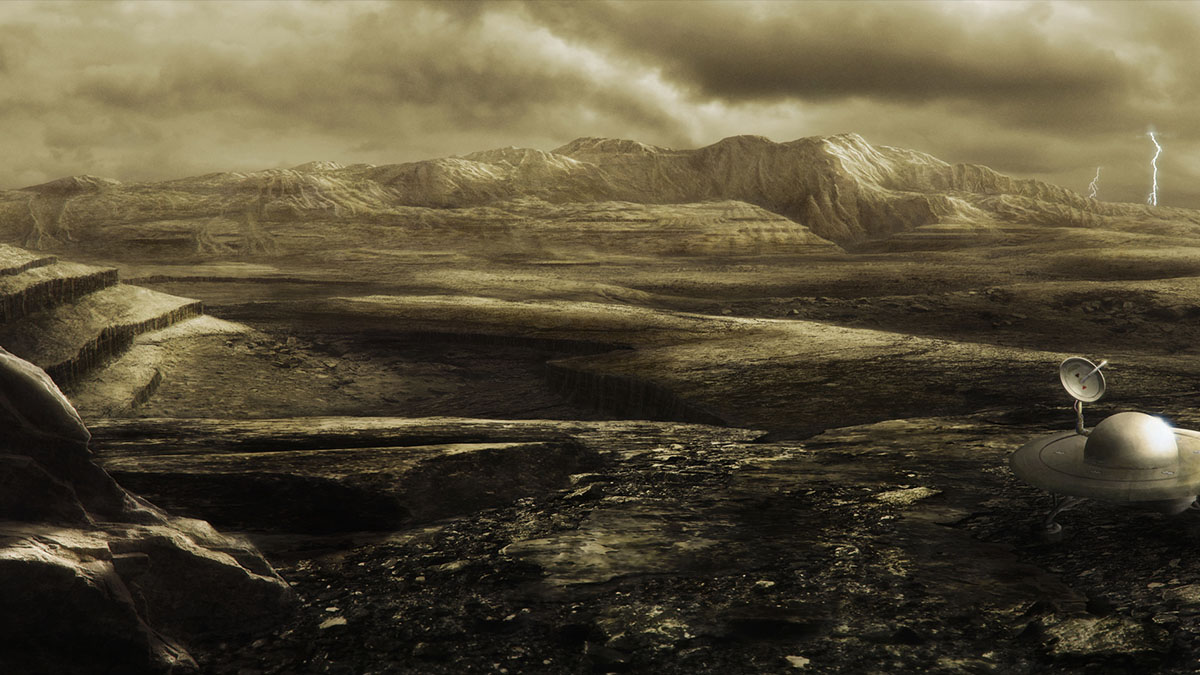what makes a planet habitable?

Lately, it seems like almost every popular science show about astronomy absolutely has to talk about the habitable zone concept and marvel at how lucky we are to be in just the right orbit around our parent star. Supposedly, the distance from the Sun is just enough to keep our water liquid and give life a chance to appear and diversify on our world. But this concept is actually very misleading. It’s not our orbit that keeps the water on Earth in liquid form. It’s actually the pressure and the greenhouse gases of our atmosphere.
According to the math, our planet should be a snowball flirting with 0°C or 32°F temperatures all year round. While that’s warm enough for a lot of microbes to exist, complex life probably wouldn’t have evolved. Add to that the fact that the Sun was actually much colder a billion years ago than it is today and it seems that without greenhouse gases, Earth would be a frozen desert. Clearly, there’s a major problem with using the distance from the star to determine the habitability of a planet. With the recent launch of Kepler to look for other Earths in other solar systems, we need to keep that in mind and develop a much more precise approach to figure our whether life like we know and understand today could evolve on one of the planets we’re bound to detect, and give climate its due as a key player in the evolutionary process.
This is exactly what an interdisciplinary team of scientists said in a 2008 paper on the subject of life on alien worlds. Without directly rebuking the habitable zone concept, they pointed out a wide number of flaws which have to be taken into consideration when a new planet which looks like a potential habitat for extraterrestrials is found. For example, if the planet has a very thick atmosphere and high pressures, water remains liquid at temperatures above 100°C since the boiling point of water on Earth is based on the pressure of our atmosphere at surface level. We can see examples of this phenomena in ocean trenches where volcanic eruptions can’t boil the water around them due to the immense pressure on the bottom of an ocean.
The team also outlines biological considerations. We know living things that feel comfortable at temperatures we would find to be inhospitable. Bacteria can live in -85°C while some strains of archaea could withstand 130°C and reproduce at -10°C and 121°C respectively. Sure, it’s not intelligent, complex life that many space enthusiasts and sci-fi fans want to find, but it’s life by all existing definitions. Because we don’t really know what alien life is like, we can’t rule out that it may be even tougher that that. After all, natural selection on an alien planet would do its part in weeding out organisms that aren’t efficient enough to thrive in harsh conditions.
But the most important aspect of their work is pointing out that seasons and regional climates would play a major role in influencing the planet’s habitability. How well does the planet hold up to an ice age? In an ice age, is everything frozen or are there places where temperatures would be nice and warm for complex life? Understanding the dynamics of climates on an alien planet, the long term trends of its orbit and the duration of its seasons are all major factors in making a case for a specific kind of life on a recently detected planet. Casual eyeballing of where it is in relation to its parent star just won’t do for planets other than our stellar twins.
See: David Spiegel, Kristen Menou, Caleb Scharf (2008). Habitable Climates The Astrophysical Journal, 681 (2), 1609–1623 DOI: 10.1086/588089





